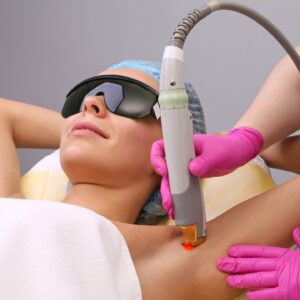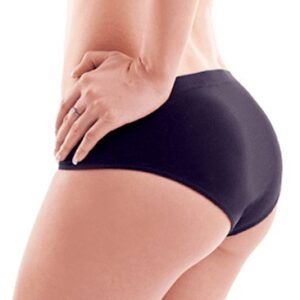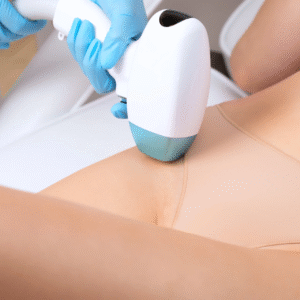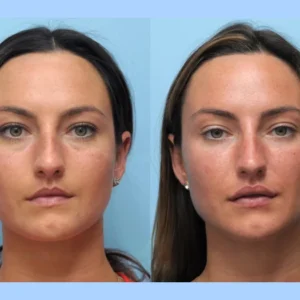Understanding Acne Scars: A Deeper Look
Acne scars form as a result of inflammation within the skin’s pores. When acne lesions—particularly severe or cystic types—damage the surrounding tissue, the body begins a healing process. During this repair, the skin may produce too much or too little collagen. Too little collagen causes depressions in the skin (atrophic scars), while too much can lead to raised scars (hypertrophic scars). For those seeking effective correction, Laser acne scar treatment in Abu Dhabi offers advanced options that target these scars at their root, promoting balanced collagen production and smoother skin texture.
Laser acne scar treatment works by stimulating the skin’s natural healing process, encouraging the regeneration of healthy skin and more balanced collagen production. Each type of laser treatment is engineered to interact with the skin in specific ways to support these outcomes.
How Laser Technology Targets Acne Scars
Laser therapy for acne scars works on the principle of controlled skin injury. By delivering focused light energy into targeted layers of the skin, lasers encourage cellular regeneration, collagen synthesis, and skin remodeling. Unlike topical treatments that only affect the outermost layer, lasers can reach deep into the dermis, where scars originate.
The specific wavelength and pulse duration of a laser determine how it interacts with skin tissue. Some lasers create micro-injuries to stimulate new tissue growth, while others target pigmentation or excess collagen directly. The goal is to break down scar tissue and prompt the body to replace it with healthier, smoother skin.
Types of Laser Treatments and Their Mechanisms
Ablative Lasers
Ablative lasers, such as CO₂ and Erbium lasers, work by removing the top layers of damaged skin. These lasers vaporize scarred tissue and initiate the growth of new, healthy skin cells. The thermal effect also tightens skin and boosts collagen production in the treated area. This method is highly effective for deep atrophic scars.
-
CO₂ Laser: Penetrates deeply and is excellent for treating more severe scarring.
-
Erbium Laser: Offers a gentler resurfacing approach with less heat, ideal for lighter scars and more sensitive skin.
Non-Ablative Lasers
Non-ablative lasers do not remove any layers of skin. Instead, they heat the underlying skin tissue to stimulate collagen production while leaving the outer layer intact. These lasers are preferred for individuals who need skin rejuvenation without downtime.
-
Fractional non-ablative lasers: Deliver laser energy in a grid pattern, leaving surrounding tissue unaffected to speed up healing. This fractional approach allows for effective scar treatment with minimal side effects.
-
Pico and Nd:YAG lasers: Often used for discoloration and shallow texture irregularities, especially in darker skin types.
Fractional Laser Technology
Fractional lasers—both ablative and non-ablative—divide the laser energy into thousands of tiny columns. These microthermal zones treat a “fraction” of the skin surface at a time, surrounded by untreated, healthy tissue. This accelerates healing, improves safety, and reduces recovery time.
The science behind fractional technology lies in its ability to initiate a wound healing response without fully ablating the skin. This triggers the body’s natural processes to replace scarred and damaged skin with smoother, healthier tissue.
Collagen Remodeling: The Key to Smoother Skin
One of the most powerful outcomes of laser therapy is collagen remodeling. Collagen is the structural protein responsible for skin firmness and elasticity. In acne-scarred skin, collagen fibers may be disorganized, deficient, or excessive.
Laser treatments induce a mild thermal injury beneath the skin’s surface, which activates fibroblasts—cells responsible for collagen synthesis. Over time, these fibroblasts lay down new collagen in a more organized, structured way, which helps fill in depressions and smooth out irregular textures.
This process continues for weeks or even months after treatment, leading to gradual and long-lasting improvements in the skin’s appearance.
The Inflammatory Response and Healing
Laser therapy also activates the skin’s inflammatory response, which plays a crucial role in regeneration. When the laser energy creates controlled micro-injuries, the body responds by increasing blood flow, transporting white blood cells, and releasing growth factors to the area.
These biological signals encourage tissue repair, stimulate the migration of healthy skin cells, and aid in breaking down old, fibrous scar tissue. This orchestrated healing response is what allows the skin to renew itself naturally after treatment.
Skin Tone and Laser Interaction
Different lasers interact uniquely with melanin, the pigment in the skin. This is why certain laser technologies are selected based on an individual’s skin tone. For example:
-
Erbium and non-ablative lasers are often preferred for medium to darker skin tones due to their lower risk of pigmentation issues.
-
Pico and Q-switched lasers are effective in addressing pigmentation and dark acne marks while preserving skin integrity.
Advanced laser systems today are designed to minimize risks and provide safe, effective treatment for a variety of skin types by controlling depth, energy intensity, and pulse duration.
Combining Lasers with Other Modalities
The science behind optimal acne scar treatment often involves a combination approach. Lasers may be used in conjunction with:
-
Microneedling: Enhances skin regeneration and allows deeper penetration of growth factors.
-
Radiofrequency: Adds thermal energy to deeper layers of skin to boost collagen without affecting the surface.
-
PRP (Platelet-Rich Plasma): Injected or applied topically after laser to accelerate healing and improve outcomes.
This multimodal strategy is based on the principle that acne scarring involves multiple skin layers and types of tissue damage, requiring a layered treatment plan.
Gradual Improvement and Skin Renewal
Laser acne scar treatments typically involve a series of sessions spaced a few weeks apart. The rationale is to progressively improve skin texture and stimulate sustained collagen production without overwhelming the skin. Gradual improvement ensures that the skin maintains balance and that each treatment builds upon the last for optimal, natural-looking results.
Frequently Asked Questions
How does the skin repair itself after laser treatment?
After laser-induced micro-injuries, the skin enters a repair cycle that includes inflammation, proliferation of new cells, and remodeling of collagen. This natural healing process restores smoother, healthier skin.
Can laser completely remove acne scars?
While lasers significantly improve skin texture and reduce scar visibility, complete removal may not be possible. However, results can be dramatic, with smoother, more even skin achievable over time.
Is collagen production permanent?
Collagen stimulated by laser treatments continues to build over months. While natural aging can affect long-term results, the newly formed collagen remains unless disrupted by future skin damage or aging.
Do laser treatments work for all types of acne scars?
Different lasers target different types of scars. Deep boxcar and rolling scars may respond well to fractional CO₂, while pigmentation and mild indentations are better suited to non-ablative or Pico lasers.
Conclusion
The science behind laser acne scar treatment is rooted in precision, regeneration, and cellular renewal. By harnessing the body’s natural healing mechanisms, laser therapy breaks down scar tissue, stimulates collagen, and renews the skin from within. This evidence-based approach offers a sophisticated path to smoother, more radiant skin—one that aligns both with dermatological science and personal confidence.






